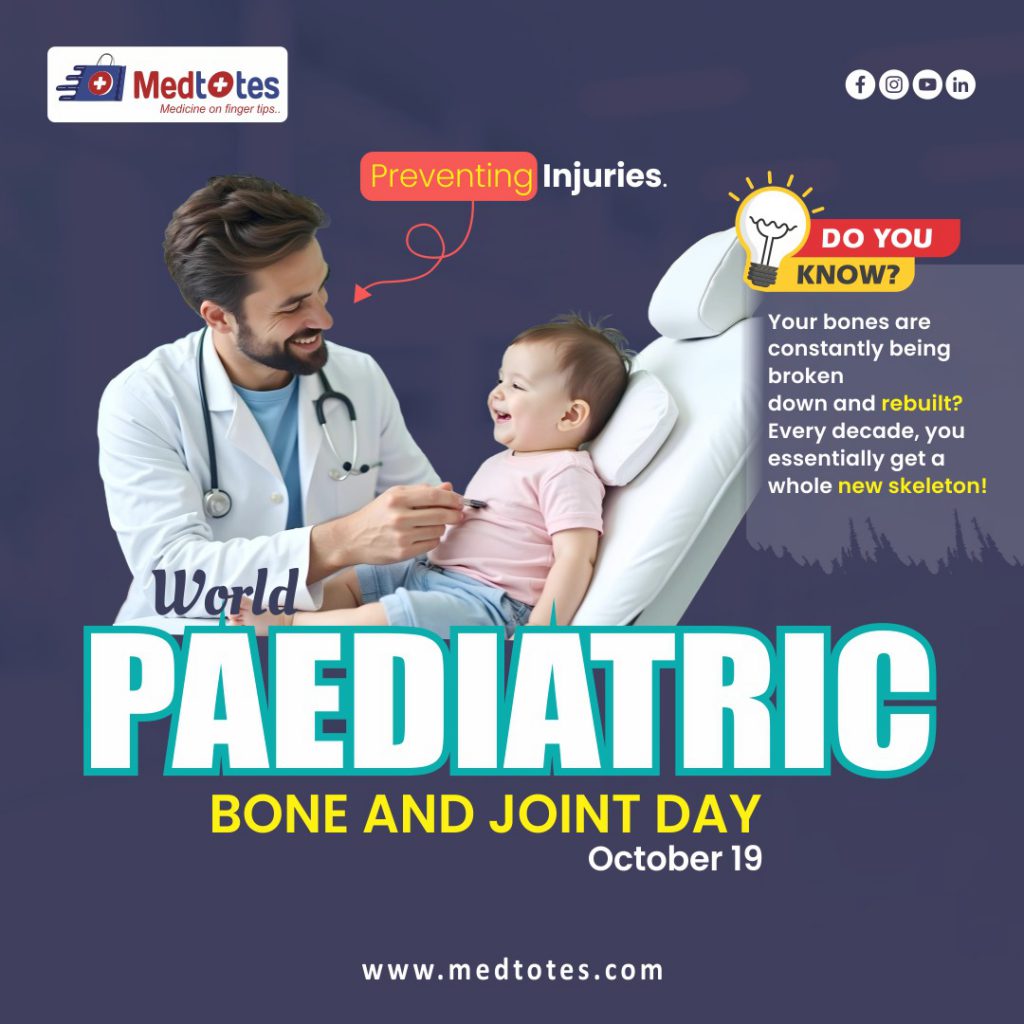introduction
World Paediatric Bone and Joint Day is celebrated annually on October 19, and this global event focuses on raising awareness about children’s bone health and musculoskeletal conditions to raise awareness about the importance of bone health and early detection of information in children. Healthy bones play an important role in the overall growth and development of a child. From infancy through adolescence, bone provides support for movement, protection of internal organs, and movement. Ensuring good bone health during childhood is important, as this period is crucial for the development of peak bone density that lays the foundation for lifelong bone health.

Key topics related to children’s bone and joint health
Musculoskeletal conditions: Children may experience musculoskeletal conditions, including juvenile rheumatoid arthritis, congenital osteoporosis, and epilepsy. Early diagnosis and treatment are important in managing these conditions and preventing later complications.
Bone growth and joint pain: Many children experience joint pain, usually as a growth stimulus or an underlying bone condition. Timely diagnosis and intervention can help prevent issues such as osteoporosis, vitamin D deficiency, or growth plate injury that can hinder a child’s physical development
Early Detection and Diagnosis: The key to preventing long-term bone health issues lies in early detection. Parents and caregivers should be aware of signs like frequent fractures, persistent joint pain, or abnormal posture. Regular check-ups, bone density tests, and monitoring calcium and vitamin D intake are essential preventive measures.
Promoting Paediatric Bone Health
World Paediatric Bone and Joint Day aims to highlight the role of education in improving paediatric bone health outcomes. Some important measures include:
Nutrition: A balanced diet rich in calcium, vitamin D, and other essential nutrients is critical for bone development.
Physical Activity: Encouraging weight-bearing exercises such as running, jumping, or walking helps build and maintain strong bones.
Awareness: Parents, teachers, and healthcare providers must be educated on the importance of bone health and be vigilant about detecting early signs of bone disorders.
By promoting these aspects, World Paediatric Bone and Joint Day encourages a global conversation on the importance of bone health in children, emphasizing that prevention and early diagnosis are key to ensuring strong and healthy bones throughout life.
